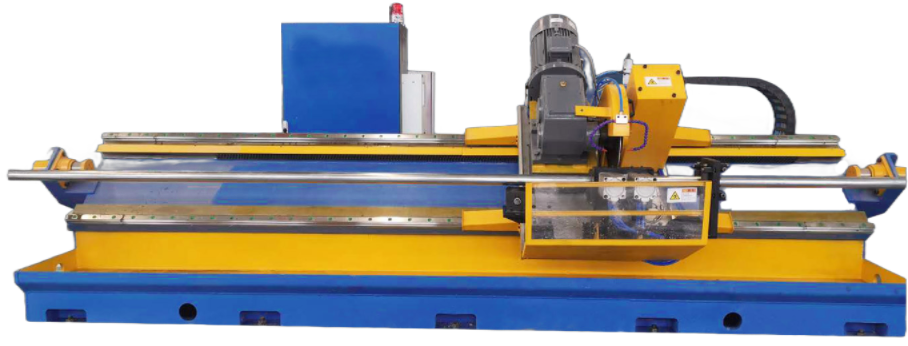Understanding the Process and Benefits of Roll Forming in Sheet Metal Fabrication
Understanding Roll Forming in Sheet Metal Fabrication
Roll forming is a metal forming process that shapes long lengths of sheet metal into desired cross-sectional profiles using a series of rollers. This method is widely utilized in various industries, including construction, automotive, and appliance manufacturing, due to its efficiency, precision, and ability to produce consistent shapes over extended runs. This article delves into the fundamentals of roll forming, its advantages, applications, and the factors contributing to its success in sheet metal fabrication.
The Roll Forming Process
The roll forming process involves feeding a flat strip of metal through a series of rollers that systematically bend, shape, and contour the material into a specific profile. The process typically starts with a continuous length of steel, aluminum, or another metal alloy. As the strip passes through each set of rollers, it is gradually formed into the desired shape, which could be anything from a simple 'C' or 'Z' channel to complex custom profiles.
The rollers are strategically designed and aligned to create the necessary bends and curves. Depending on the complexity of the required shape, a roll forming machine may have anywhere from a few to over thirty different sets of rollers. This makes the setup crucial; precise roller alignment is essential for producing uniform and accurate parts.
Advantages of Roll Forming
1. Efficiency Roll forming is an efficient process, particularly for high-volume production runs. Once the tooling is set up, the continuous feed of metal allows for the rapid production of long lengths of profile with minimal downtime.
2. Material Utilization The process minimizes waste as it uses the entire sheet of metal, making it a cost-effective solution compared to other methods that involve cutting materials down.
3. Consistency and Precision Roll forming is capable of producing consistent results; the repeatability of the process ensures that each piece is identical, accommodating precise tolerances.
4. Versatility A variety of metal materials can be used in roll forming, including various grades of stainless steel, aluminum, and other alloys. This versatility allows manufacturers to select appropriate materials based on strength, corrosion resistance, and aesthetic requirements.
roll forming sheet metal

5. Custom Tooling Custom die sets can be created for specific applications, allowing for the production of unique shapes tailored to particular needs.
Applications of Roll Forming
Roll forming has a wide range of applications across various industries. In the construction sector, it is commonly used to manufacture structural components such as roofing panels, rain gutters, and steel studs. The automotive industry also benefits from roll forming for producing components like door frames, chassis parts, and trim.
Additionally, appliances utilize roll-formed parts for internal structures and casing. Products such as heating and cooling ducts also use roll-formed sections because of their ability to maintain structural integrity while being lightweight.
Factors Influencing Roll Forming Success
Several factors can influence the effectiveness and success of a roll forming operation. Proper material selection is crucial, as different metals have varying properties that can affect the roll forming process. The thickness of the metal is another important consideration; while thinner materials are easier to shape, thicker materials may offer enhanced strength but can be more challenging to roll.
Moreover, the maintenance of the roll forming equipment is vital for ensuring production quality. Regular inspections and adjustments can prevent defects and extend the life of the machinery. Additionally, skilled operators are essential for optimizing the setup and process, as they can make necessary adjustments to accommodate variations in material properties or production demands.
Conclusion
Overall, roll forming is a highly effective method for shaping sheet metal, offering numerous advantages that make it a favored process in manufacturing. With its ability to produce durable, precise, and custom shapes at high volumes, roll forming continues to play a pivotal role across various sectors. As technology advances and production demands evolve, the future of roll forming in sheet metal fabrication looks promising, with opportunities for further innovation and efficiency improvements.
-
High Frequency Straight Seam Welded Pipe Production Line-BzZhou Xinghua Machinery Equipment Manufacturing Co., LTD.|line pipe steel&welded gas pipeNewsJul.30,2025
-
High Frequency Straight Seam Welded Pipe Production Line-BzZhou Xinghua Machinery Equipment Manufacturing Co., LTD.|High Precision&Automated SolutionsNewsJul.30,2025
-
High Frequency Straight Seam Welded Pipe Production Line - BzZhou Xinghua Machinery Equipment Manufacturing Co., Ltd.NewsJul.30,2025
-
High Frequency Straight Seam Welded Pipe Production Line-BzZhou Xinghua Machinery Equipment Manufacturing Co., LTD.|Precision Welding, High EfficiencyNewsJul.30,2025
-
High Frequency Straight Seam Welded Pipe Production Line|BzZhou Xinghua|Precision Welding&EfficiencyNewsJul.30,2025
-
High Frequency Straight Seam Welded Pipe Production Line - BzZhou Xinghua|Precision Engineering&EfficiencyNewsJul.30,2025


